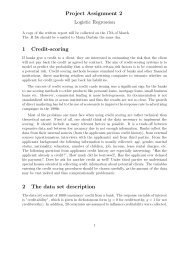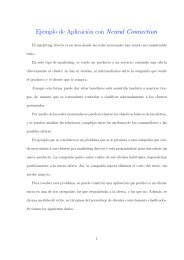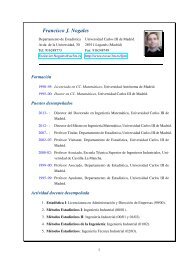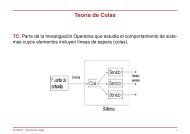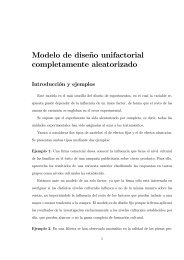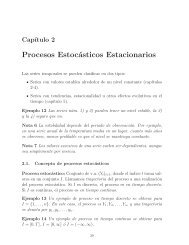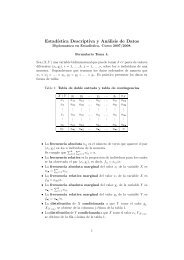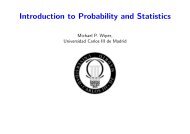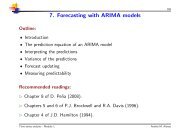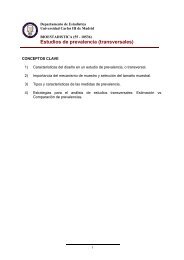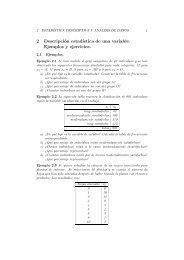Slides Chapter 1. Measure Theory and Probability
Slides Chapter 1. Measure Theory and Probability
Slides Chapter 1. Measure Theory and Probability
You also want an ePaper? Increase the reach of your titles
YUMPU automatically turns print PDFs into web optimized ePapers that Google loves.
<strong>1.</strong>6. MEASURABILITY AND LEBESGUE INTEGRAL<br />
The next theorem says that for any measurable function f on<br />
IR, we can always find a sequence of measurable functions that<br />
converge to f. This will allow the definition of the Lebesgue integral.<br />
Theorem <strong>1.</strong>4 Let f : Ω → IR. It holds:<br />
(a) f isapositivemeasurablefunctionif<strong>and</strong>onlyiff = lim n→∞ f n ,<br />
where {f n } n∈IN is an increasing sequence of non negative simple<br />
functions.<br />
(b) f isameasurablefunctionif<strong>and</strong>onlyiff = lim n→∞ f n ,where<br />
{f n } n∈IN is an increasing sequence of simple functions.<br />
Definition <strong>1.</strong>28 (Lebesgueintegralfor non-negativefunctions)<br />
Letf beanon-negativemeasurablefunctiondefinedover(Ω,A,µ)<br />
<strong>and</strong> {f n } n∈IN be an increasing sequence of simple functions that<br />
converge pointwise to f (this sequence can be always constructed).<br />
The Lebesgue integral of f with respect to the σ-finite measure µ<br />
is defined as ∫<br />
f dµ = lim f n dµ.<br />
Ω n→∞<br />
∫Ω<br />
Thepreviousdefinitioniscorrectduetothefollowinguniqueness<br />
theorem.<br />
Theorem <strong>1.</strong>5 (Uniqueness of Lebesgue integral)<br />
Let f be a non-negative measurable function. Let {f n } n∈IN <strong>and</strong><br />
{g n } n∈IN be two increasing sequences of non-negative simple functions<br />
that converge pointwise to f. Then<br />
∫<br />
lim<br />
n→∞<br />
Ω<br />
f n dµ = lim g n dµ.<br />
n→∞<br />
∫Ω<br />
ISABEL MOLINA 26



